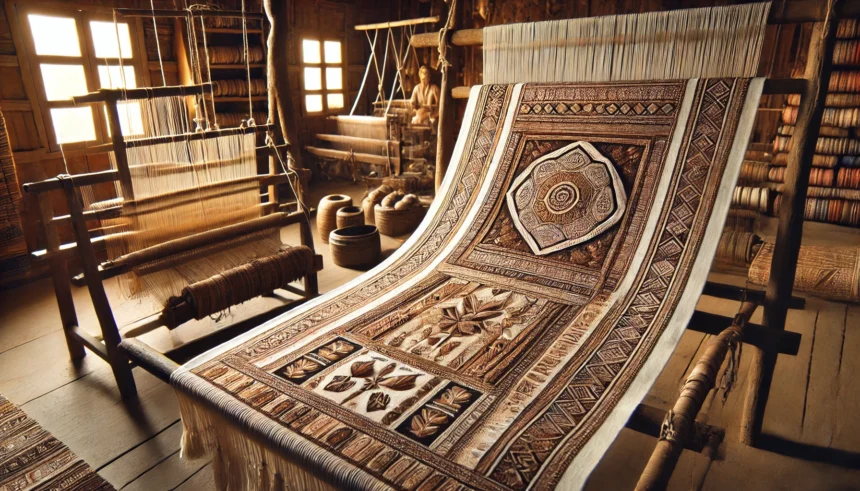Introduction to Tissariss
Tissariss is more than just a textile—it is a living tradition that weaves together centuries of history, artistry, and cultural identity. Originating in ancient times, Tissariss refers to a sophisticated form of hand-woven fabric that integrates natural materials, intricate designs, and symbolic patterns. Revered for both its beauty and cultural meaning, Tissariss continues to play a significant role in modern design, fashion, and heritage preservation.
Historical Background
Ancient Origins
The origins of Tissariss can be traced back to early civilizations where artisans utilized rudimentary tools and natural fibers like cotton, wool, and silk to create textiles. These early fabrics served both functional and ceremonial purposes, often used in religious rituals, community celebrations, and royal garments.
Evolution Through the Ages
As societies progressed, so did the art of Tissariss. During the medieval period, the craft saw the inclusion of new dyeing methods and decorative embellishments. Trade and colonial exchanges brought in fresh techniques, patterns, and color schemes, evolving Tissariss into a more refined and diverse textile art. In contemporary times, Tissariss has been embraced by both luxury fashion designers and grassroots artisans, maintaining its traditional values while adapting to new trends.
Techniques and Craftsmanship
Tissariss is characterized by a blend of time-honored techniques that are passed down through generations. These methods are labor-intensive and require a keen eye for detail.
Weaving
The base of Tissariss lies in hand-loom weaving. Artisans set up intricate warp and weft patterns, often spending days or weeks on a single piece.
Embroidery and Embellishment
After the fabric is woven, additional layers of beauty are added using fine embroidery. Beads, sequins, and metallic threads often adorn the fabric, enhancing its visual and cultural value.
Dyeing Techniques
Natural dyeing is a core aspect of authentic Tissariss. Artisans use plant-based dyes like indigo, turmeric, and henna to achieve vibrant yet environmentally friendly colors.
Table: Common Tissariss Techniques and Tools
| Technique | Description | Tools Used |
|---|---|---|
| Weaving | Creating the fabric base using warp and weft | Hand loom, shuttle |
| Embroidery | Decorative stitching on fabric | Needle, thread, embellishments |
| Dyeing | Coloring fabrics naturally | Natural dyes, water vats |
| Block Printing | Imprinting patterns using wooden blocks | Wooden blocks, dye trays |
Materials Used in Tissariss
Tissariss textiles are known for their use of organic and sustainable materials.
Natural Fibers
Cotton, silk, wool, and linen are the most commonly used fibers. These materials are not only biodegradable but also breathable and durable.
Natural Dyes
The use of plant-based dyes not only adds authenticity but also reduces the environmental impact. Common sources include:
- Indigo (blue)
- Turmeric (yellow)
- Madder root (red)
- Walnut shells (brown)
Decorative Elements
In addition to thread, artisans use mirrors, shells, and metallic threads to add texture and dimension to Tissariss fabrics.
Cultural Significance and Symbolism
Tissariss is a cultural storyteller. Each piece is more than fabric—it is a narrative expressed through color, pattern, and craftsmanship.
Symbolism in Patterns
Designs often represent cultural beliefs, natural elements, or historical tales. For instance, a lotus motif may symbolize purity, while repetitive geometric patterns might signify unity and harmony.
Colors with Meaning
Colors are not chosen randomly in Tissariss. They carry emotional and spiritual connotations. For example:
| Color | Symbolism |
| Red | Power, vitality |
| White | Purity, peace |
| Yellow | Prosperity, joy |
Regional Variations
Different regions have their own take on Tissariss. Some may prefer vibrant colors, while others focus on minimalism and subtle textures.
Role in Life Events
Tissariss garments are worn during weddings, festivals, and spiritual ceremonies, making them a core part of cultural identity.
The Artisans Behind Tissariss
The soul of Tissariss lies in its artisans. These craftsmen and women dedicate their lives to preserving this age-old tradition.
Community Collaboration
Tissariss is often created in community settings where each artisan specializes in a different aspect—some weave, others dye or embroider.
Intergenerational Knowledge
Skills are passed from parent to child, ensuring that each generation adds their touch while respecting the craft’s roots.
Modern-Day Challenges
Globalization, fast fashion, and machine-made imitations threaten the livelihood of authentic Tissariss artisans. Yet, there are growing efforts to support them through cooperatives, fair-trade markets, and government initiatives.
Modern Adaptations and Innovations
Tissariss has found its place in the modern world, merging traditional artistry with contemporary design.
In Fashion
From haute couture to everyday wear, Tissariss fabrics are now seen on global runways. Designers are increasingly collaborating with artisans to create unique, ethical fashion lines.
In Home Décor
Cushion covers, wall hangings, and upholstery made from Tissariss add a touch of cultural elegance to modern homes.
Technological Integration
Modern techniques like digital printing and laser cutting are being used to complement traditional craftsmanship, opening up new design possibilities.
Sustainability and Ethical Practices
Tissariss is a leading example of sustainable fashion.
Eco-Friendly Materials
All-natural fibers and dyes make Tissariss environmentally sustainable.
Fair Trade Practices
By paying artisans fairly and promoting transparency, the Tissariss industry supports ethical consumerism.
Environmental Impact
Tissariss production has a low carbon footprint, especially compared to synthetic and mass-produced textiles.
Global Recognition and Economic Impact
Tissariss is gaining international acclaim, not just for its aesthetics but also for its ethical and environmental values.
Market Demand
The global market for handcrafted, sustainable textiles is growing. Tissariss is at the forefront, offering both authenticity and elegance.
Economic Upliftment
Craft clusters engaged in Tissariss contribute significantly to local economies, particularly in rural areas.
Cultural Diplomacy
Tissariss has become a symbol of cultural pride and heritage, often featured in international exhibitions and collaborations.
Challenges and Future of Tissariss
While the future of Tissariss is promising, challenges remain.
Mass Production vs. Authenticity
The demand for faster production threatens the unique, handcrafted essence of Tissariss.
Need for Awareness
More needs to be done to educate consumers about the value of authentic Tissariss.
Preservation Efforts
Institutions, NGOs, and local governments are working to document techniques, train new artisans, and promote global appreciation.
FAQs about Tissariss
1. Is Tissariss suitable for modern fashion trends?
Absolutely. Tissariss blends well with both traditional and contemporary styles, making it highly versatile.
2. How can I verify the authenticity of Tissariss fabric?
Look for certifications from artisan cooperatives, fair-trade labels, and inspect the craftsmanship closely.
3. Can I use Tissariss textiles in my home décor?
Yes, they are perfect for upholstery, cushion covers, wall art, and curtains.
4. Is Tissariss washable and durable?
With proper care—hand washing or dry cleaning—Tissariss fabrics can last for many years.
5. Where can I buy authentic Tissariss products?
Look for artisan collectives, ethical fashion boutiques, and verified online platforms that support handmade textiles.
Conclusion
Tissariss is a timeless art form that stands at the intersection of history, culture, and sustainability. From ancient handlooms to modern fashion houses, its journey is a testament to human creativity and resilience. By supporting authentic Tissariss, we not only embrace beauty and craftsmanship but also contribute to preserving a precious cultural legacy for generations to come.
Recommended Articles:
- How to Use CPT Upgrade in gem5: A Complete Beginner-Friendly Guide
- BX-4013HWBC – A Comprehensive Guide for Professionals and Beginners
- The Ultimate Guide: For Start LuxuryInteriorsOrg Writing About Interior Design Excellence
- Embracing the Future of Eye Care with Eye_Rene845
- How to Contact phone number DurosTech: A Complete Guide to Their Communication Channels






